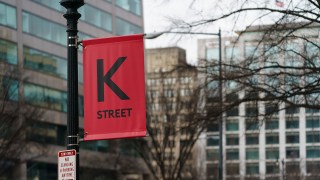ALICE is on the rise in the US
Following last week’s Poor People’s Low-Wage Workers’ Assembly Morale March on Washington D.C., attention has further turned to ALICE.
No, it’s not a she, rather it’s an acronym coined by United Way, which stands for: Asset Limited, Income Constrained, Employed.
This term represents hard-working Americans who are employed but still unable to afford basic necessities such as food, housing, healthcare, childcare, and transportation.
3 jobs to apply for this week
- Policy Advisor, Arnold & Porter, Washington D.C.
- Federal Tax Manager, Coinbase, Remote
- Federal Civilian Enterprise Account Director, Adobe, McLean
Research shows that clinical care impacts only 20 percent of health outcomes, but social determinants of health (SDOH) affect as much as 50 percent.
To understand the rise of ALICE and its implications, we must look at several key factors:
Socio-economic factors
Socio-economic factors are broad, and include education, job status, family/social support, income and community safety.
While the U.S. boasts many world-class universities, many residents struggle to access quality education.
And despite low unemployment rates, many jobs in the service sector and gig economy fail to provide living wages or benefits. This leaves workers vulnerable to financial instability, even when fully employed.
The high cost of living in many areas often forces families to live apart too, weakening traditional support networks. This lack of family/social support can exacerbate financial and emotional stress for ALICE households, especially when it comes to childcare for parents who also work outside the home.
Additionally, income levels mean workers are forced to commute long distances or live in substandard housing, while income inequality often correlates with higher crime rates in certain neighborhoods.
Health behaviors
Access to healthy food options, safe spaces for physical activity, sleep hours, and free time to exercise can be more limited for those on lower incomes. These all contribute to higher rates of behavior-related health issues among ALICE populations.
Economic stress often correlates with higher rates of smoking and substance abuse, while working long hours and financial stress can limit opportunities for social interaction, leading to mental health issues, like isolation and loneliness.
Healthcare challenges
Despite the Affordable Care Act, many ALICE individuals and families remain uninsured or underinsured, and often forgo necessary medical care due to cost.
Plus, even in well-serviced cities, access to quality healthcare can be limited in certain neighborhoods, with fewer clinics and longer wait times.
Quality of care remains an issue, and while disparities in healthcare quality persist, ALICE individuals are likely to continue receiving suboptimal care.
Physical Environment
Lack of access to quality, affordable housing in many cities forces many ALICE families to live in substandard conditions or far from their workplaces, resulting in health issues from inadequate housing and long commutes.
And while some cities have extensive public transportation systems, they can be costly and time-consuming for those living in outlying areas, impacting both job opportunities and quality of life.
Further, just Chicago, Jersey, New York and Philadelphia have a twenty-four hour metro service, meaning shift workers are at a disproportionate disadvantage outside of these areas.
Environmental issues also often disproportionately affect lower-income neighborhoods, meaning air quality can vary considerably, further contributing to health disparities.
3 more open roles to discover this week
- Relationship Banker – Washington Boulevard Financial Center, Bank of America, Baltimore
- Federal Territory Account Sales Executive, Autodesk, MD
- Director – Program Management (USDA), ICF, Reston
The way forward
The rise of ALICE and the working poor in cities like Washington D.C. serves as a microcosm of a broader national trend.
As policymakers continue to debate solutions to economic inequality, the daily struggles of disadvantaged individuals continue to shape lives and communities across the country.
Some of these issues are addressed by regional programmes like workforce development and affordable housing projects.
However, due to its complexity, ALICE calls for strategies that take more than income into account, and includes all of the other aspects that lead to unstable finances and poor health outcomes.
Understanding the connections between social, health, and economic wellbeing allows us to work towards solutions that will help households escape poverty, but progressive policies and leadership are ultimately required.
Looking to advance your career? Visit The Hill Job Board today
Copyright 2024 Nexstar Media Inc. All rights reserved. This material may not be published, broadcast, rewritten, or redistributed..











